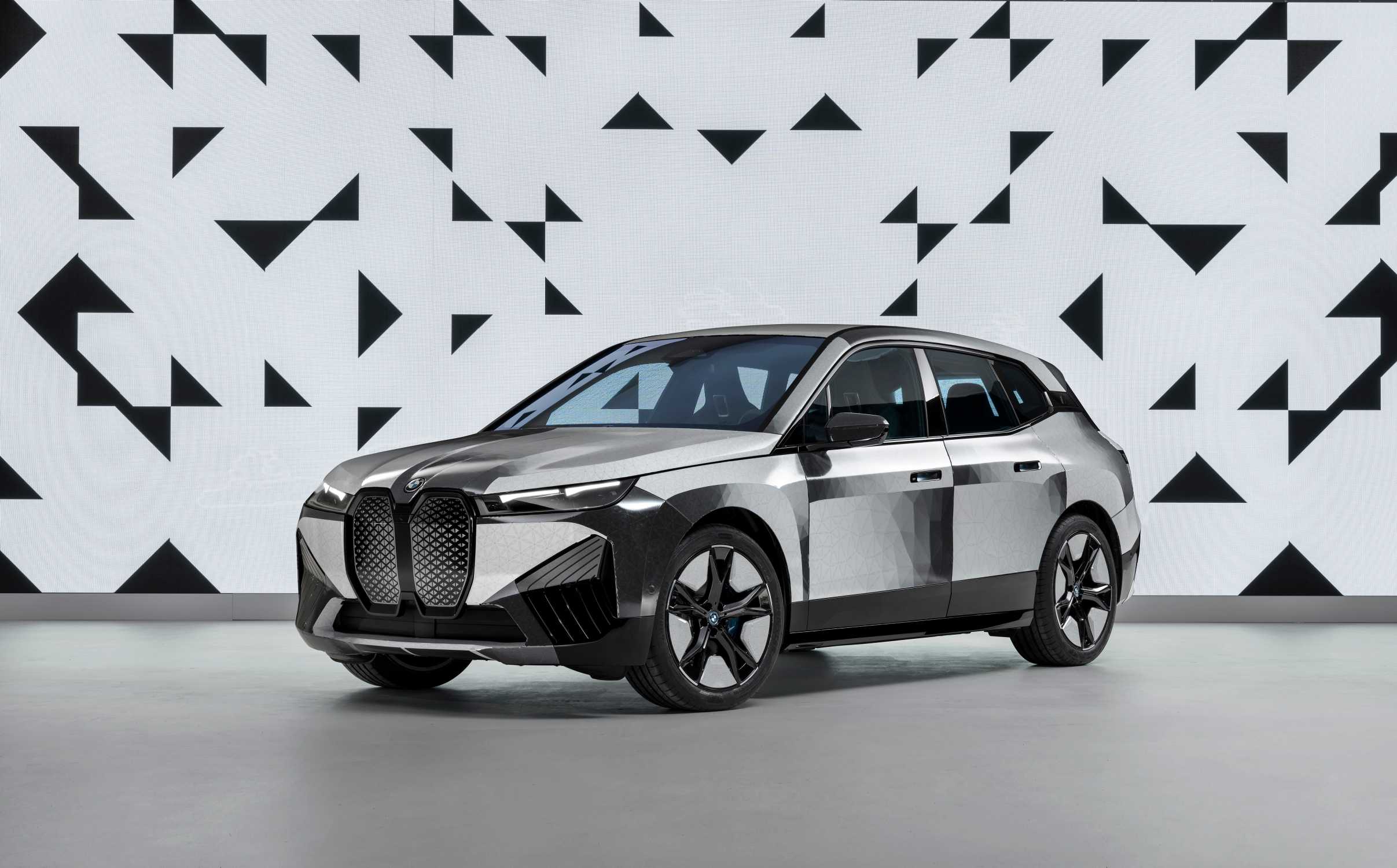Stream of the Day
CES 2022: BMW’s colour-changing car
The BMW iX Flow featuring E Ink can change from white to black, and any grey colour in-between, at the touch of a button.
When technical becomes magical: Imagine a BMW that’s black during the day and white at night. Just by pushing a button. The BMW iX Flow demonstrated just how fascinating and surprising this looks at its world premiere at CES in Las Vegas this week.
With the BMW iX Flow featuring E Ink being presented at CES 2022, the Munich-based premium car manufacturer is offering the prospect of a future technology that uses digitisation to also adapt the exterior of a vehicle to different situations and individual wishes. The surface of the BMW iX Flow featuring E Ink can vary its shade at the driver’s prompting.
The fluid colour changes are made possible by a specially developed body wrap that is tailored precisely to the contours of the all-electric Sports Activity Vehicle from BMW. When stimulated by electrical signals, the electrophoretic technology brings different colour pigments to the surface, causing the body skin to take on the desired colouration.
The innovative E Ink technology opens new ways of changing the vehicle’s appearance in line with the driver’s aesthetic preferences, environmental conditions or even functional requirements. The technology thus offers potential for personalisation in the area of exterior design. The BMW iX Flow featuring E Ink demonstrates this potential to impressive effect. Against this background, the BMW Group is driving the development of the technology so that a new form of personalisation can be experienced both on the outside and on the inside of future production vehicles.
“This gives the driver the freedom to express different facets of their personality or even their enjoyment of change outwardly, and to redefine this each time they get into their car,” says Stella Clarke, head of project for the BMW iX Flow featuring E Ink. “Similar to fashion or the status ads on social media channels, the vehicle then becomes an expression of different moods and circumstances in daily life.”
How a variable exterior colour can increase efficiency.
A variable exterior colour can also contribute to wellness in the interior and to the efficiency of the vehicle. This is done by taking account of the different abilities of light and dark colours when it comes to reflecting sunlight and the associated absorption of thermal energy. A white surface reflects a lot more sunlight than a black one. By implication, heating of the vehicle and passenger compartment as a result of strong sunlight and high outside temperatures can be reduced by changing the exterior to a light colour. In cooler weather, a dark outer skin will help the vehicle to absorb noticeably more warmth from the sun.
In both cases, selective colour changes can help to cut the amount of cooling and heating required from the vehicle’s air conditioning. This reduces the amount of energy the vehicle’s electrical system needs and with it also the vehicle’s fuel or electricity consumption. In an all-electric car, changing the colour in line with the weather can therefore also help to increase the range. In the interior, the technology could, for example, prevent the dashboard from heating up too much.
E Ink technology itself is extremely energy efficient. Unlike displays or projectors, electrophoretic technology needs absolutely no energy to keep the chosen colour state constant. Current only flows during the short colour changing phase.
Millions of paint capsules in a custom wrap.
Electrophoretic colouring is based on a technology developed by E Ink that is most well-known from the displays used in eReaders. The surface coating of the BMW iX Flow featuring E Ink contains many millions of microcapsules, with a diameter equivalent to the thickness of a human hair. Each of these microcapsules contains negatively charged white pigments and positively charged black pigments. Depending on the chosen setting, stimulation by means of an electric field causes either the white or the black pigments to collect at the surface of the microcapsule, giving the car body the desired shade.
Achieving this effect on a vehicle body involves the application of many precisely fitted ePaper segments. Generative design processes are implemented to ensure the segments reflect the characteristic contours of the vehicle and the resulting variations in light and shadow. The generative design algorithms enable the necessary formability and flexibility required to tailor the ePaper exactly to the design lines of the vehicle.
Laser cutting technologies guarantee high precision in generating each segment. After the segments are applied and the power supply for stimulating the electrical field is connected, the entire body is warmed and sealed to guarantee optimum and uniform colour reproduction during every colour change.



















